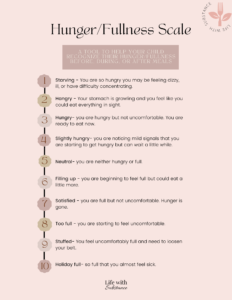This post may contain affiliate links. If you shop from one of our links, we may earn a commission.
Did you know the weight loss industry is a multi-billion dollar corporation? Unfortunately, the weight loss industry has been focusing more and more on weight loss diets directed toward kids. As parents, we feel more pressure than ever before to make sure our children are at a healthy weight and abide by a nutritious diet. However, research shows that temporary weight loss often results in long-term weight gain. Another reason why kids should not diet and what you can do instead.
Diet Culture
Diet culture tells us that diets are the only approach to weight loss. While they may provide a sudden decrease in weight (likely a shift in water with some muscle or fat loss) they don’t provide the long-term gratification of sustained weight loss. But social media tells us the only way to be thin and fit (and that you should be ashamed of being overweight) is to continue to diet. What most people choose to ignore is that the best diet is actually no diet at all. Instead, consider a lifestyle change of eating a wide variety of foods combined with an intuitive eating approach.
Sadly we are seeing restrictive diets being put on young children as little as toddlers or preschoolers. Even parents with overweight babies feel the pressure to cut back on their intake.

Statistics from the National Association of Anorexia Nervosa and Associated Disorders show:
- 42% of 1st-3rd grade girls desire to be thinner.
- 81% of 10-year-old children are worried about becoming fat.
- 46% of 9-11 year-olds are “sometimes” or “very often” on diets.
- 35-57% of adolescent girls participate in crash dieting, fasting, self-induced vomiting, diet pills, or laxatives.
- In a college campus survey, 91% of the women admitted to controlling their weight through dieting.
These statistics are alarming and bring an awareness that we must work to make a change, and that starts in the home. Kids should not diet due to the negative side effects that can come with chronic dieting.
Kids Should Not Diet
Heal Your Relationship with Food and Your Body
Maybe you have spent the majority of your life struggling with an unhealthy relationship with food and weight and want to break the cycle for your family. First off, I applaud you for your awareness to make a change and your boldness to take the next step. Bringing healing to your relationship with food and body first will help you better serve your family and support them in having a joyful love of food.

Diet rules
I grew up thinking Weight Watchers and calorie tracking was the best way to lose weight and you were “good” for eating minimal amounts of healthier foods and “bad” for allowing “empty calories”. When eating is no longer enjoyable then you are left to deal with the emotional roller coaster of guilt, shame, and confusion. Many of us were raised with a warped understanding of what a healthy relationship with food looks like due to food rules from our parents such as the “clean plate club”, “dessert if you finish your meal”, or “you have to eat your veggies before you can have anything else”. Because that was “normal” to us, we assume that’s how we should raise our children to become good eaters.
Unfortunately creating all these rules around food prevents your children from becoming Intuitive Eaters and having a positive body image. They become more focused on boundaries around food than being able to honor their hunger and fullness. This may likely be where you feel you need to start as well. Start off by asking yourself: Do I have a healthy relationship with food and my body shape? Do I create food rules and restrictions on my eating habits? Are these rules ones I have created myself or do they stem from diet culture? Am I eating based on hunger and fullness or out of emotion?
Body Acceptance and Why Kids Should Not Diet
Growth charts can be confusing and difficult to interpret if you don’t look at them on a regular basis. Many parents feel alarmed when they see their child trending above the 85th percentile for weight and feel it may be time to put their child on a diet. But being at a higher weight is not wrong for your child. We know that our kid’s bodies will change multiple times before they become an adolescent. They will grow in height and have fluctuations in weight on their own time. At various stages of growth, you will notice your child has a more robust appetite than at other times, but that’s because they require more energy during these times of change. Bodies come in all kinds of shapes and sizes, and one is not better than the other.
A 2016 study asked 501 women ages 20-35 to think back to comments their parents had made to them about their weight and eating habits as a child. Not surprisingly, the adult women who were most dissatisfied with their bodies were the ones whose parents made comments about their weight. How we choose to talk about our own bodies can become your child’s inner dialogue as well.
As parents, it is not our job to try and create the body size that we think is best for them. Kids already have enough pressure from peers and media messages to be thin, we don’t need to instill that body shame at home as well. Making no comments at all about our child’s weight sends the strongest message to them that they are loved and accepted by their parents regardless of their body size. Kids should not diet in an attempt to feel accepted.
Creating a Trusting Feeding Relationship
Creating a trusting feeding relationship with our kids is so important. Kids today are suffering more than ever from a poor feeding relationship that has resulted in feeding struggles, eating disorders, and negative body image. On the other hand, parents feel stressed, exhausted, and frustrated knowing how to best feed their kids to encourage them to develop healthy habits. This power struggle creates tension around meal times, preventing an enjoyable time together as a family.
Creating a trusting feeding relationship means there are 2 parts to the feeding process. Ellyn Satter teaches in her Division of Responsibility that parents are responsible for determining when and where the family eats. The child determines how much and whether they want to eat. We are encouraging a joyful love of food when we allow ourselves and our children to maintain these boundaries. As parents, we find it difficult to release some of the responsibility of eating to our children, but by doing so we are creating a sense of trust in feeding. In turn, we find children feel less pressured to eat a certain way and are more likely to have a positive relationship with food and body.
Building this trust around food can start at any age. Some parents feel like they missed their opportunity to create healthy behaviors, but the good news is this can start with older kids too. Kids should not diet as it prevents a trusting feeding relationship.
What if my child is overweight?
Kids will grow at their own pace and eat what is best for their bodies if you are encouraging intuitive eating behaviors. Creating a restrictive diet for our children now will only result in long-term consequences. Regardless of your child’s weight, you should continue to feed them the same way you would if they were a lower weight. Most importantly, kids should not diet as a way to manage their weight. Implement the below strategies to help.
Create structured feeding times
Establish scheduled meal and snack times to prevent grazing and promote hunger/fullness cues.
Avoid diet talk
Avoid identifying foods as “good” or “bad” based on their nutrition profile. This promotes guilt and shame for eating “bad” foods. Aim to make all foods neutral.
Implement Division of Responsibility
Practice Ellyn Satter’s Division of Responsibility. This concept teaches that parents are responsible for determining when and where the family eats. The child determines how much and whether they want to eat.
Utilize a hunger/fullness scale
Encourage conversation about internal cues of hunger and fullness. This helps your child better identify when they feel ready to eat and how much feels right to them.
Incorporate family meals
Eat together as a whole family and practice serving family style. Recent studies have shown that family meal time has declined by 30%. Research tells us that kids who have family meals eat better, feel better about themselves and get along better with others. Kids are more likely to do well in school and achieve a body weight that is right for them. Studies also show eating as a family decreases their chances of abusing drugs, smoking, or having sex. Having sit-down meals as a family takes intentionality, but it is so worth it!
80/20 Rule
The 80/20 rule helps promote a balanced diet. This idea simply means that 80% of the food you choose to serve is nutrient-dense and includes a variety of food groups. That allows 20% to come from foods your child enjoys more, such as desserts.
Encourage a joyful love of movement
Provide regular opportunities for physical activity. Find activities that your child enjoys or start routine walks as a family. Whatever the activity of choice, avoid making it a regimented form of exercise as a way to burn calories. Instead, it should be a way to move their body that brings them joy.
In Summary
It’s not wrong to want to protect your child from bullying or feel embarrassed by their weight. However, kids should not diet in an attempt to manage their weight. But it is our job as parents to help our children learn to love themselves the way they were created. It is also our job to help establish a joyful love of food through gentle nutrition. Do you feel like you need to heal your relationship with food and your body? Are you ready to create a positive feeding environment in your home? Sign up for my newsletter for more guidance on feeding your little ones.


